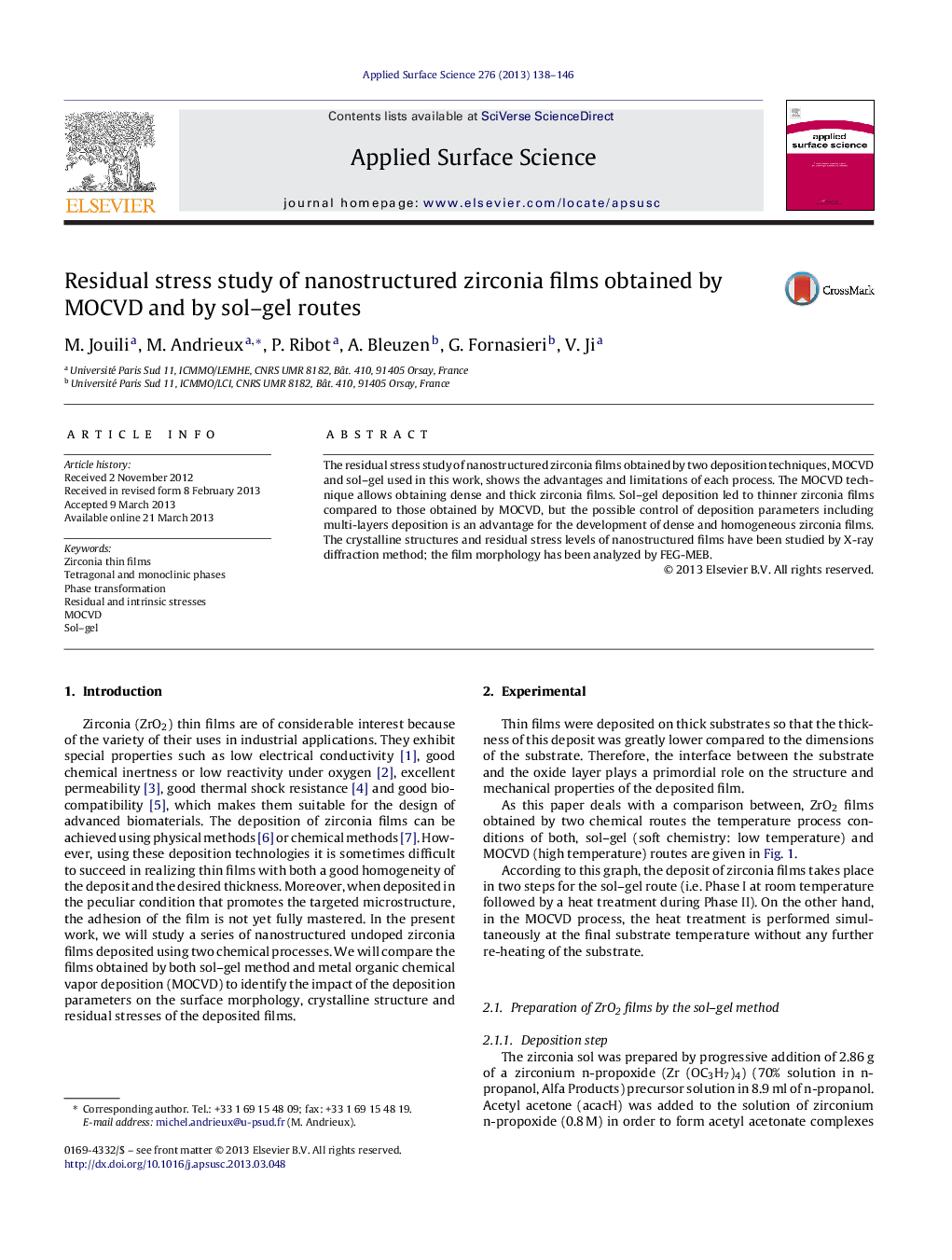| Article ID | Journal | Published Year | Pages | File Type |
|---|---|---|---|---|
| 5360059 | Applied Surface Science | 2013 | 9 Pages |
Abstract
The residual stress study of nanostructured zirconia films obtained by two deposition techniques, MOCVD and sol-gel used in this work, shows the advantages and limitations of each process. The MOCVD technique allows obtaining dense and thick zirconia films. Sol-gel deposition led to thinner zirconia films compared to those obtained by MOCVD, but the possible control of deposition parameters including multi-layers deposition is an advantage for the development of dense and homogeneous zirconia films. The crystalline structures and residual stress levels of nanostructured films have been studied by X-ray diffraction method; the film morphology has been analyzed by FEG-MEB.
Related Topics
Physical Sciences and Engineering
Chemistry
Physical and Theoretical Chemistry
Authors
M. Jouili, M. Andrieux, P. Ribot, A. Bleuzen, G. Fornasieri, V. Ji,
